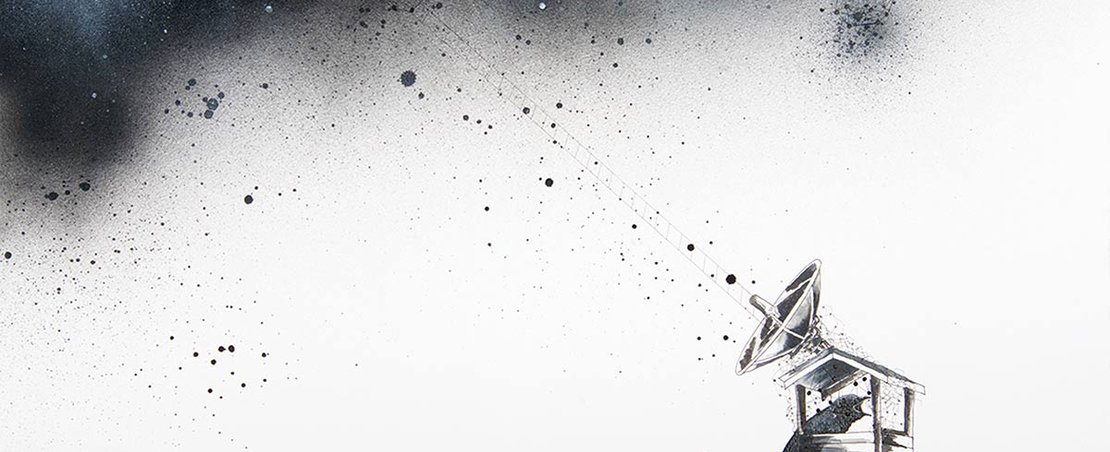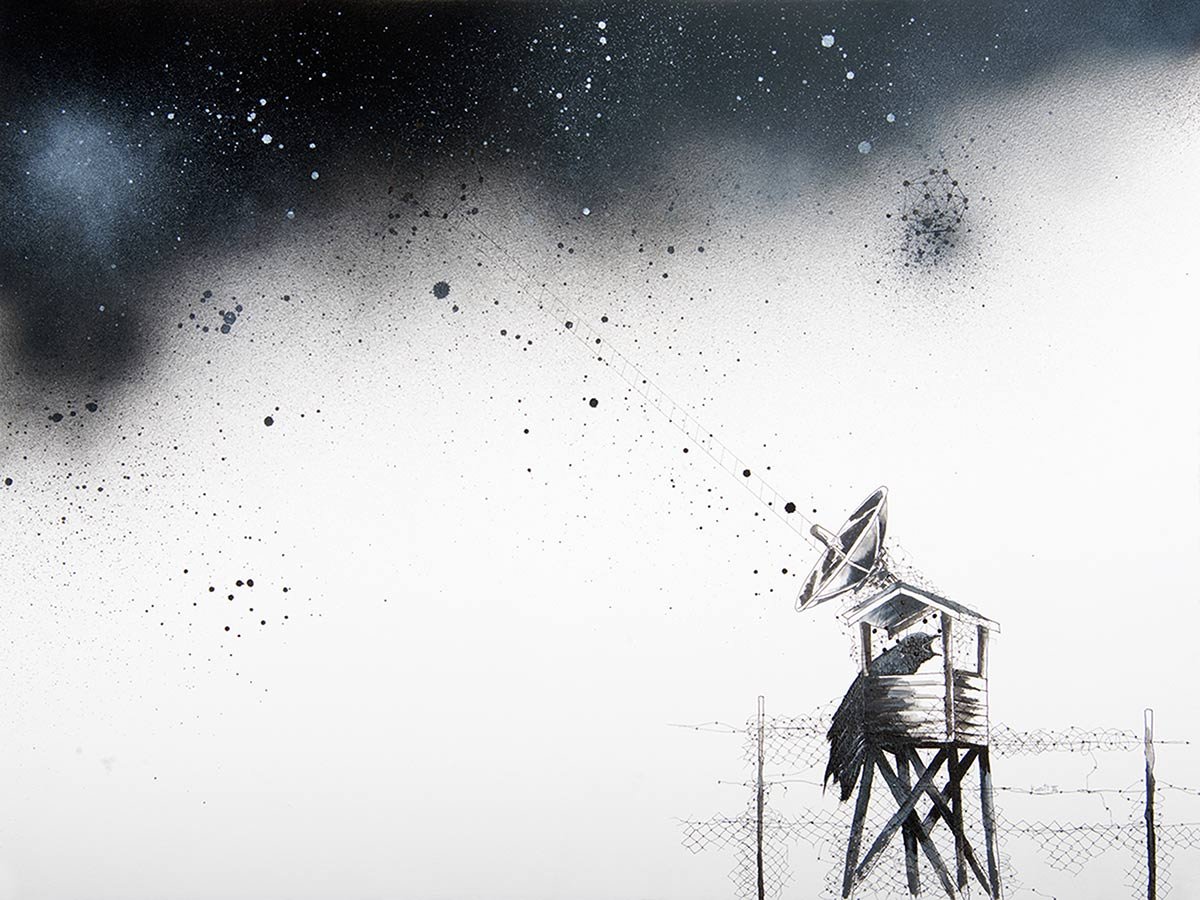
Hannah Redler Hawes, ODI Associate Curator in Residence writes about a new exhibition ODI has co-produced with FACT, Liverpool

The New Observatory brings together an international group of artists, researchers and technologists whose work explores new and alternative modes of measuring, predicting, and sensing the world today. Imagination and speculation are as fundamental to this research as any technological tool.
Central to our project is an attempt to distinguish observation from narratives around surveillance, with their overriding associations of secrecy and distrust. The exhibition offers up observation as a series of actions which include drawing, composing, film-making, expeditions and citizen sensing.
It also considers how conversations around observation shift when we relocate the traditional purpose of an observatory from being a specialist site of scientific exploration to a more free-form site of artistic and individual exploration, exempt from the formal constraints of science.
Jackie Karuti’s two films from her series There Are Worlds Out There They Never Told You About 2016 present humanity as part of an interrelated system within imaginary, technical and actual realities, whilst suggesting that logical readings may be less effective than those that allow for speculation.
David Gauthier’s sound and video works, including Measure for Measure for Measure2017 expose the often visceral conditions of data collection and how the nature of the instruments related to the science of measurement (metrology) affect our understanding of the world around us.
Liz Orton’s photographic series The Longest and Darkest of Recollections from 2016 considers notions of time, memory and the construction of knowledge through works which explore knowledge acquisition in geology, and the frailty of human timespans against those of geological time.
How we know what we know and the role an emotive connection might play in consolidating that knowledge is at the heart of artist collective Proboscis’ project Lifestreams 2012. Personal health data such as sleep patterns, blood pressure and step count are manifested through a series of beautiful seashell-shaped 3D-printed forms which harness the magical, memorable and endlessly appealing nature of seashells.
As an art curator, one of the most appealing aspects of the open data movement is its emphasis on exchange and reciprocity as fundamental to new ideas. This is congruous with some of the most radical art movements of recent times which challenge, as open data ultimately does, the notion of single independent genius in favour of collective responsibility.
Many of the artworks in The New Observatory depend upon this ethos for their realisation and / or indeed use open data. Kei Kreutler and Libre Space Foundation’s Open Space Observatory 2017 is an initiative to gather observations of satellites, spacecraft and space junk from members of the public, and develop the open source infrastructure to enable this.. They hope to democratise observation of the regions beyond our world.
Two of the works are brand new commissions from the first ODI artists in residence Thomson & Craighead and Natasaha Caruana who each spent six months at the ODI’s London headquarters in 2015 to research open data and network culture.
In Recruitment Gone, Wrong Thomson & Craighead present a conversation enacted between ventriloquist masks suspended in mid-air. The masks are replaying a covert recording of students disrupting an American National Security Agency (NSA) recruitment drive at Wisconsin University following Edward Snowden’s 2013 revelations. At particular times visitors are invited to wear the masks thus physically occupying either the students antagonistic interrogations or the agent’s evasive responses. The piece avoids a resigned or hand-wringing response to the surveillance states, in favour of a performative experience in which we become conscious of the collusive role we play in our own surveyed state by willingly, perhaps uncritically, engaging with the data infrastructures which enable it. It encourages us to raise questions about net neutrality and transparency.
Natasha Caruana has made two new interconnected pieces following research into the open data of divorce in the UK. Divorce Index 2017 is a filmic response to her findings. A couple perform a series of choreographed gestures which interpret data suggesting the pressures which may affect a marriage including unemployment, gambling and access to higher education. The work raises questions about how we make sense of major emotional upheaval. It may lead us to ask ourselves if seeking the right conditions as well as the right person is essential to everlasting love, and if we would consider relocating if the data told us there was no hope.
We hope that overall the exhibition will act as an open call to everyone to creatively and critically consider what the roles of analysis, understanding and imagination have in a world of constant observation. It encourages us to reflect on what and why we observe, and to what end.
The New Observatory is at FACT, Liverpool, July 22 – October 1 2017. It is co-produced by FACT and the Open Data Institute and curated by Hannah Redler Hawes (ODI) and Sam Skinner (Manchester University and FACT).
Recruitment Gone Wrong by Thomson & Craighead and Divorce Index by Natasha Caruana were commissioned by the ODI Data as Culture programme and supported using public funding by the National Lottery through Arts Council England.